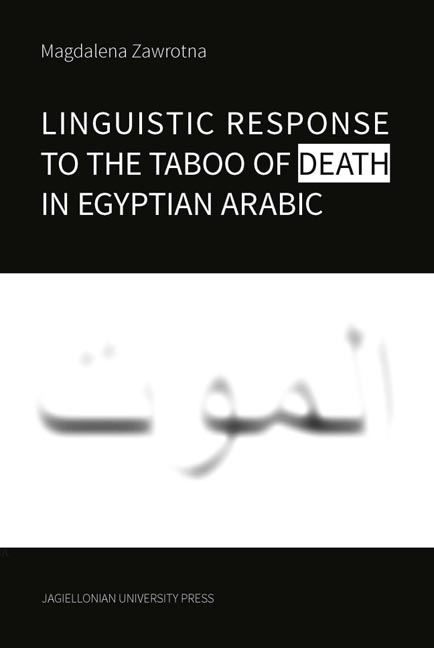Book contents
- Frontmatter
- Contents
- 1 Transcription system
- 2 Introduction
- 3 What is formulaicity?
- 4 Material
- 5 State of research
- 6 Structural notes
- 7 Qualitative analysis of death announcements, comments containing condolences and their responses
- 8 Recapitulation of the analysed material
- 9 Death and the agency of God
- 10 The taboo of death
- 11 Summary
- 12 Questions for further exploration
- Bibliography
- Miscellaneous Endmatter
5 - State of research
Published online by Cambridge University Press: 14 October 2023
- Frontmatter
- Contents
- 1 Transcription system
- 2 Introduction
- 3 What is formulaicity?
- 4 Material
- 5 State of research
- 6 Structural notes
- 7 Qualitative analysis of death announcements, comments containing condolences and their responses
- 8 Recapitulation of the analysed material
- 9 Death and the agency of God
- 10 The taboo of death
- 11 Summary
- 12 Questions for further exploration
- Bibliography
- Miscellaneous Endmatter
Summary
As previously stated, formulae are specific elements of language that are retrieved whole from the mental lexicon at the moment of speech production. In this sense, a number of proprieties distinguish formulae from words: “wide-ranging intraphrase flexibility”, “mandatory affective and attitudinal nuances”, “considerable length” (Van Lancker Sidtis 2012a: 358). The last point probably should be further refined on other occasion. Van Lancker Sidtis refers to them with a term “formuleme”, which is an item stored in the mental lexicon, a conglomerate of features relating to meaning (social and affective connotations), linguistic form (grammatical, phonetic, prosodic) and pragmatic contingencies (ibid.).The interest of researchers in formulae dates back to the mid-19th century, when the first studies of aphasiac patients revealed that some parts of language remain intact in their case (Wray 2002). Concepts interpreting the fixedness of idioms began to appear, e.g., in Bobrow and Bell’s (1973) model idioms are treated similarly to lexemes in memory. According to them, the analysis mechanism is as follows: literal interpretation is attempted first, and if unsuccessful, a switch is made to select an idiom form the lexicon. Further studies (Swinney and Cutler 1979) employing visual classification latencies did not confirm this theory, on the contrary, they revealed that idioms were processed even faster than non-idiomatic material (Wood 2015).
In one of the first reports in the neurolinguistic field, Winner and Gardner (1977) noted that patients with right hemisphere damage showed problems with a picture matching task involving formulaic metaphors. In the late 80s, a neuropsychological protocol defined a new term – pragnosia (Nelson et al. 1989), a deficit in the social use of language in persons with right hemisphere damage:
In persons who have sustained right hemisphere damage, many of the elements belonging to the pragmatics of language are deficient: maintaining topic and theme, conversational turn-taking, recognizing when speaker’s meaning overrides linguistic meaning in utterances (e.g., in indirect requests, sarcasm, idiomatic expressions), processing humour, and appropriately using social expression. When recalling that certain of the natural properties of formulaic language pertain to their appropriate use in social context, it follows that the right hemisphere, so adept at the pragmatic component of language, would play a major role in use of formulas (Van Lancker Sidtis 2012a: 70).
- Type
- Chapter
- Information
- Publisher: Jagiellonian University PressPrint publication year: 2021

